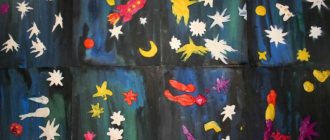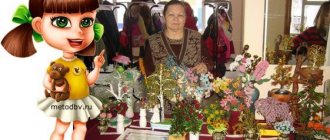Project on the topic: “Travel to cities of the world” for 4th grade.
Project goal: Develop a travel route to cities around the world.
Select cities with the most interesting sights. Prepare a presentation on the subject “The World Around You”, write a report or message. Mark the route on a geographical map. Tell schoolchildren about the work done, answer questions, defend the project. Project plan:
- Introduction
- Novosibirsk
- Saint Petersburg
- NY
- Hamburg
- Rome
- Athens
- Conclusion
- Example of a finished presentation
Streets of London
London is a huge city with more than a thousand streets.
London street names
They also come from the famous buildings of the city that were located on them or to which the streets led.
For example, Great Tower Street in
City leads to the Tower.
And London Wall runs
along the ancient wall that once surrounded the city.
Many streets in the British capital are named after geographical features. Thus,
Fleet
Street is named after the Fleet River, which flowed here until the 18th century, and then was enclosed in a pipe.
Water Street leads
to the banks of the Thames.
Streets and areas of London received their names from the names of large owners of houses and land. the Covent area
—
The Garden (English: CoventGarden)
is located on a site that was owned by Westminster Abbey.
Street names in London consist of two words. The first word is the name itself, and the second can mean:
- Paved road (street),
- Descent from a hill (hill, rise),
- Low place (vale),
- The road along which we rode on horseback (road),
- Continuous row of houses (terrace),
- A wide street lined with trees (avenue),
- Alley (walk), etc.
The most famous streets are:
Baker Street
| The street was named after the builder William Baker, who laid it in the 18th century. Originally a residence for the upper class, Baker Street today is primarily home to commercial and retail properties. |
Baker Street is one of the most famous and busiest streets in London. It is located in the northern area of Westminster. Baker Street gained popularity thanks to the famous literary character Sherlock Holmes, whom Arthur Conan Doyle settled at this address in his novel.
Piccadilly
Piccadilly
- one of the widest and busiest streets in the historical center of London - Westminster. It runs from Piccadilly Circus (in the east) to Hyde Park (in the west).
Title " Piccadilly"
"received from the mansion of Robert Baker, who at the beginning of the 17th century made a fortune selling fashionable
piccadill
- stiff collars with jagged edges and a wide cord that tightens at the edges.
Oxford
Street
| Oxford Street - this is the favorite and most common place not only for London, but also for European fashion connoisseurs. Every day, thousands of tourists and locals come to the busiest street to buy fashionable items. |
Oxford Street features not only several dozen of the world's most popular brands, but also hundreds of lesser-known, but quite fashionable shops. In contrast to the astronomical prices of Regent and Bond Streets, Oxford Street has fairly affordable youth prices. The western part of the street is more fashionable and prices there are usually higher than in the main eastern part.
In addition to streets with interesting names, London has very beautiful parks. The foundation of Green London
» make up the Royal Parks.
There are eight of them in total, and the most famous and largest of them are located in the city center. These are Hyde Park , Green Park, St James Park , Regent 's Park and Kensington .
They are called royal not only because they are royally luxurious, well-groomed and beautiful, but also because of their historical origin.
In the old days, near the populated areas of the city, the authorities deliberately left significant green spaces intended for walking and, above all, for hunting trips of the royal family.
Report to the project:
I would start my journey with the cities that arose in modern times.
Novosibirsk
It appeared at the beginning of the 20th century, and can be classified as a city of modern times. Novosibirsk is a large city with a population of 1.6 million people. The most famous sights of Novosibirsk are the oceanarium, the opera and ballet theater, the local history museum, and the arboretum.
From Novosibirsk you can go to St. Petersburg.
Saint Petersburg.
It was founded by Peter the Great in 1703, that is, at the beginning of the 18th century. This is one of the most beautiful cities in Russia and the whole world. It has many unique palaces, cathedrals, and drawbridges across the Neva.
The most important sights of the northern capital are the Peter and Paul Fortress and the Winter Palace. Any guide will tell you about them in detail.
NY.
Now we will go overseas and visit New York.
It is one of the largest metropolitan areas in the United States, which lies on numerous islands off the east coast of America. The largest and most famous of them is Manhattan Island, the historical center of New York. The symbol of the metropolis is the wonderful Statue of Liberty.
New York was founded in the early 17th century, in 1624, by English settlers.
Hamburg.
Let's return to Western Europe.
Hamburg was founded in 810. This is one of the most beautiful metropolises in Germany, with many theaters, churches and palaces. Hamburg is a seaport and in the Middle Ages it was one of the centers of European trade.
Rome.
The eternal city of Rome is located in Italy. It was founded in the 8th century BC. It is a monument city that houses the famous Colosseum and St. Paul's Cathedral.
The central part of Rome is occupied by the Vatican, a region-state in which the residence of the Pope, the head of all Catholics, is located. In the square in front of the Vatican is the most famous fountain in Europe - Trevi.
Athens.
We will end our journey into the past in Athens
Historians still do not know the exact time when it was founded.
They name the date – 7th millennium BC. Athens is one of the oldest cities on the entire planet. And he is very handsome. In the center of Athens, on a hill, lies the Acropolis, an ancient temple complex topped by the ruins of the famous Parthenon. Photos of these monuments will decorate any album.
Conclusion:
There are a variety of cities in the world, very ancient and very young. Each of them has its own history, attractions and is beautiful in its own way. Each one contains people who love their hometown and are proud of it. There is so much beauty and wonder in the world!
Project “Travel around the world”
Project “Travel around the world”
Project: medium duration, group, creative - exploratory.
Every country, every people should have its own traditions, holidays, customs, and culture. There is no country on our planet where they do not honor and remember their history, their ancestors, morals and customs.
Over the course of several months, we implemented the project “Travel to the Countries of the World”.
The children were very interested in playing “travel” games, during which they learned something new about other countries.
In our work, we involved parents in cooperation, together we prepared for classes based on the results of the trip (they sewed costumes for the theater, taught children dances from different countries, studied history, traditions, and culture).
Relevance: To introduce children to the culture, customs, traditions, literature of the peoples of different countries and, of course, tolerance. Today, the values and principles necessary for common survival and free development are brought to the fore (the ethics and strategy of non-violence, the idea of tolerance for foreign and foreign positions, values, cultures, the idea of dialogue and mutual understanding, the search for mutually acceptable compromises, etc.). The problem of tolerance can be classified as an educational problem. The problem of communication culture is one of the most acute in kindergartens, and in society as a whole. Understanding perfectly well that we are all different and that we must perceive another person as he is, we do not always behave correctly and adequately. It is important to be tolerant of each other, which is very difficult. “Pedagogy of cooperation” and “tolerance” are concepts without which any transformations in a modern school are impossible. In my opinion, the formation of such qualities as recognition by a person of another, acceptance, understanding would make it easier to solve the problem of cultivating tolerance.
“Traveling through countries” allowed us to use different types of activities. The project implied the unity of children and adults, so parents also became full participants.
Problem: insufficient understanding of children about the countries of the world,
state symbols about the traditions and culture of the people of different countries. Goal: to develop a sense of tolerance in children of senior preschool age. Development of cognitive activity of older preschoolers
in the process of forming geographical ideas. Tasks: 1. Give ideas about different countries of the world. 2. Introduce the culture, sights, and national cuisine of these countries. 3. Carry out work on tolerant education of preschoolers. 4. Cultivate love for people of another nation. 5. Enrich and develop children's vocabulary. 6. Work with parents, involving them in tolerant upbringing in the family.
Resource support:
• Books, magazines, • Internet resources, • Postcards, • Art works and materials.
Project participants:
— Educator, — Children of the preparatory group for school, — Parents of students.
Achieving the goal is carried out through solving the following tasks:
1. Form a holistic picture of the world. Expand children's horizons
(children’s acquaintance with different countries of the world, with state
symbols: coat of arms, flag, with indigenous people and their hobbies);
2. Develop cognitive - research and productive
activity;
3. Form gender, family, civic affiliation,
patriotic feelings, feelings of belonging to the world community;
4. Foster tolerance, a sense of respect for other peoples, their
traditions
Expected results: by the end of the school year the child will know and
understand:
- that besides Russia there are other countries;
- have an idea of the flag, coat of arms of several countries;
- have an idea about the hobbies of peoples of different countries;
- that the flora and fauna in each country is diverse and
has its own characteristics;
- understand the similarities and differences between different countries;
- have basic skills in working with a map and globe.
Results of project activities: exhibitions of children's works (individual, collective works); children's presentations, open events.
The project was implemented over two months.
To create an album on the topic “Traveling around the countries of the world,” we needed the help of parents; we gave the children, together with their parents, the task of drawing up a particular country on an A3 album sheet, so that we would become acquainted with the flag, coat of arms, national costume, national cuisine, national musical instrument, flora and fauna of a given country, everything that it is rich in. Here are some works designed by children together with their parents. The album turned out great.
Participants of the project “Russia - a land of opportunities” will go on trips around the country
Free incentive trips around Russia were given to 50,617 participants in competitions and projects of the presidential platform “Russia - the Land of Opportunities” and the Russian Society “Knowledge”. The “More than a Travel” program is implemented by the Federal Agency for Youth Affairs (Rosmolodezh), the Federal Agency for Tourism (Rosturizm), the Ministry of Science and Higher Education of the Russian Federation, the platform “Russia - the Land of Opportunities” and the Russian Society “Knowledge”.
Participants in the “More than a Journey” project are winners, runners-up, finalists and the most active competitors of 26 competitions and projects of the presidential platform “Russia – the Land of Opportunities” and the Russian Society “Knowledge”.
Incentive trips within the framework of the “More than a Travel” project were received by participants and winners of such competitions and projects as “Big Change”, “Leaders of Russia”, “Abilimpix”, “Best Social Project of the Year”, “Student of the Year”, “Digital Breakthrough” ", "Career Time", All-Russian Student Graduation, Grant Competition for Youth Initiatives, platform "Another Business", "Cultural Code", "Masters of Hospitality", "CASE-IN", "My First Business", "Manage!" Cup, “My country is my Russia”, “Professional internships 2.0”, National Technological Olympiad Junior, “I am a professional”, “Your Move”, “TopBLOG”, “Flagships of Education”, “Hackathons and lectures on artificial intelligence”, and society “ Knowledge".
“The project has brought together the most ambitious, purposeful and creative people who can not only see our country, but also meet people from other regions, exchange experiences and impressions. 50,617 of our participants have already chosen trips as part of the “More than a Journey” project and will go on tours until September 2022. 23% of all participants are students under 18 years of age, 43 percent are young people from 18 to 25 years old. And the oldest participant is 90 years old, a finalist of the “TopBLOG” project, an avid traveler Evgenia Fedorovna Semenova,” said Deputy General Director of the ANO “Russia - Land of Opportunities” Alexey Agafonov.
Travel has already started; in 2022, 5,000 participants went on trips around Russia, which are organized by 55 tour operators.
“Without exaggeration, “More than a Journey” is a completely unique and unprecedented project not only for our country, but also on a global scale! We can say that we laid the foundations of social tourism in modern Russia! The decision has been made to continue “More Than a Journey” in 2022 - 2024! In addition, the program was included in the federal project “Increasing the availability of tourism products,” which is part of the national project “Tourism and Hospitality Industry.” This is an even greater responsibility for us! We face the task of expanding the geography of travel and including new routes in the program, in particular, career guidance within the “More than work” block and educational river cruises,” summed up Rostourism adviser Yulia Rybakova.
Based on the results of the trips organized in 2022, one can note the high assessment of the programs and bright, positive reviews from the project participants. Both the educational and excursion component, as well as events on urbanism, information technology, ecology, culture, media and volunteering, were highly praised. For many project participants, trips within the framework of the “More Than a Travel” project became their first experience of tourist travel in Russia.
Trips within the framework of the “More than a Travel” project of varying lengths - 17,134 weekend tours, 26,897 trips for 3-5 days within their federal district. 5,147 participants will go on long trips of over 7 days with flights across Russia, and 1,599 participants will go on original trips.
“What I’m looking forward to from my trip is a break from the everyday hustle and bustle in the company of friends. It’s very nice that “Russia – the Land of Opportunities” rewards participants with such bonuses. There will be time to remember the last festival and discuss plans for the upcoming one,” said Alexander Komkov, a participant in the Student Spring festival and an actor in the regional concert program. Participants come from almost all regions of Russia. The largest number of tourists will depart from Moscow (17,600 people), St. Petersburg (4,700), Yekaterinburg (1,400), Kazan (1,400), Krasnodar (1,600), Nizhny Novgorod (1,100), Rostov-on-Don (1,300), Vladivostok (700) and Novosibirsk (1,300).
The trips cover all regions of our country. The tours are structured in such a way that all federal districts of Russia are involved. In addition, tours include river cruises, excursion routes and tourist expeditions.
Travel programs are planned for 111 destinations within the country. Of these, about 20 percent include a visit to Moscow. 10 percent of trips are planned to St. Petersburg, 6 percent to Karelia, 3 percent to Kaliningrad, 3 percent to Sochi, the capital of the Olympics, 3 percent to Kazan, 2 percent to Vladivostok. More than 120 groups will go to regions with natural attractions - Lake Baikal, Altai, Kamchatka, Sakhalin, Karelia.
Each tour includes not only an excursion, but also an educational and socially significant program. Travelers participate in environmental and volunteer activities, develop projects to improve the urban environment, and hold meetings with the professional community, scientists and government officials. The trips will introduce travelers to the region, including through culture and socially significant activities. 12 different thematic areas have been developed for participants in urbanism, IT, ecology, media, entrepreneurship and volunteering. About 80 tours are innovative in nature: the program includes visits to technology parks and modern creative spaces.
You can see about this and other projects of the presidential platform in the New Year’s issue “Russia - the Land of Opportunities.” The film depicts all the highlights of this year, as well as the trips of the participants in the More Than a Journey program.
Travel design
Introduction
Each of us, no matter who he is or what he does, consciously or unconsciously uses the project approach in his life. Judge for yourself, any material action is preceded by a plan, an ideological development of a future event. Whatever you are going to do - from the simplest action (make tea, wash the floors, meet a girl) to the complex (build a house, graduate from a university, write a program), you create an action plan mentally or using tricky means, such as ISS, WBS, Gantt charts (it all depends on the level of structure of the project). And as you know, planning
is one of the fundamental aspects of the project approach. It follows that you can apply project management methodology to almost any life situation, for example, traveling. The problem is what is the best methodology to choose for your project. It is clear that for the simplest actions there is no point in using a project approach; everything can be done in the mind. But what if the action requires more serious planning?
In this article, I want to conduct a simulation on the application of project management methodology using the example of travel design. The fact is that almost all projects (regardless of the type and scale) have a certain general structure at the initiation stage, that is, at the very beginning of the project. At subsequent stages, different methods are already being used depending on the characteristics of the project. If you find and understand this common element, then project management from the area of something “only for advanced” will turn into a normal working tool accessible to everyone.
The simulation is based on a real trip that I want to take in the next 2 years. The project structure itself looks like this:
Now for each of these points I need to collect information. I created mind maps to visually represent the travel problems (problems are an interconnected tangle of problems). Directly to collect the information itself (links, articles, comments), I created a structured document in Google Docs (by the way, whoever wants to join in filling it out, please contact me in a personal message).
Solution
The solution in this type of project will be to create a specific set of artifacts. In this case, an artifact is a kind of man-made object that reflects/describes some part of the work done on the project (documentation, program code, model, etc.). In this example there will be the following artifacts:
- Route map.
A map indicating checkpoints, events, and methods of transportation.
Tool:
travelerspoint.com (here I sketched out the itinerary of my trip specifically for clarity). Another advantage of this service is that you can export your route to google earth, and from there to google maps. This will allow you to use the route map on your smartphone with all the bonuses that come with it. - Travel plan.
Route + calendar: online calendars. - Financial plan.
Costings. The simplest cost estimate, which indicates such items as accommodation, food, transport (air, railway, buses, car rental, etc.), purchase of equipment, visas, insurance, souvenirs, and other expenses. - Ways to earn money. — Earning plan — Saving plan
A list of things that will be taken on the road.
Action strategy
An action strategy is a non-detailed action plan for implementing a plan. This plan allows you to see the approximate order of actions that need to be done. In this case, this will be the following action plan:
- Stage 1. Collection of information (disclosure of issues).
- Stage 2. Creation of artifacts
Route - Plan
- Package list
- Financial plan
- Skills plan
- Accumulation of the required amount of money.
- Purchasing equipment
- Closing all accounts, debts, etc.
-> travel plan
Each of these tasks can be further divided into subtasks, and those in turn into subtasks, and so on up to the level of specific actions.
Tools: 42tasks.com, hitask.com (excellent service, account can be linked to google calendar) So, having an action strategy in hand, you can develop a detailed plan for its implementation. But it is better to act gradually, for example, for the stages of collecting information and creating artifacts, you can allocate half an hour a day to the project. But at subsequent stages, when real actions begin, it is necessary to plan depending on the prevailing circumstances. And it is very advisable to set a deadline - a certain deadline, so as not to delay the implementation of the plan.
Conclusion
Here I tried to show, using the example of travel, that the project approach is applicable to ordinary life situations.
Now I propose to discuss this topic: how can you implement the use of a project approach on the Internet for personal projects? I have a solution and I will voice it later, but first I would like to hear an outside opinion. And in general, check whether the implementation of such a service for managing personal projects is relevant. By the way, I note that personal projects can be transformed into collective ones. For example, you want to go traveling not alone but with friends, but everyone is geographically scattered across different cities or even countries. Moreover, having created a competent toolkit for personal projects, you can complicate it and adapt it for more complex projects. In a word, there is something to think about and discuss. PS Some of you may object and say what’s the point of planning a trip so thoroughly, and where is the element of adventure, improvisation, and some spontaneity? Woody Allen once said that if you want God to laugh, tell him about your plans. But let's think for a second, planning actually provides more information. More information - more opportunities. Nobody says that you have to be rigidly attached to your travel plan. It’s just that fate loves those who are used to relying on their own strengths and conclusions, and not on chance and amen.










